State symbols
Great Bavarian State Emblem
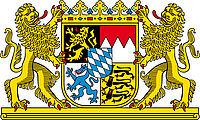
The Great Bavarian State Emblem has a long historyand tradition. It was established by law in 5 June 1950. The symbols shown by the emblem are deeply rooted in the Bavarian history. The heraldic elements of the “Great Bavarian State Emblem” each have a particular meaning:
Small Bavarian State Emblem
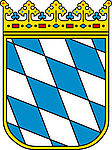
The small Bavarian State Emblem consists of a shield with white (silver) and blue rhombuses and a people’s crown (“Volkskrone”).
Who may use the Bavarian state emblem?
The big as well as the small Bavarian state emblem are State emblems and principally limited for use by government and state agencies. They may also be used for artisticor scientific purposes and for teaching or civic education.
For any other purposes the approval of the government of Upper Franconia is required. An approval can be granted only in exceptional and duly justified cases.
The unauthorized use of the big or small Bavarian State Emblem or of its parts is an administrative offense and is punishable with fines.
Source: Manual for the use of the big and small State emblem
The Bavarian State Flag
The Free State of Bavaria has two flags: the striped flag and the rhombus flag. Both flags are equal to each other.
The striped flag
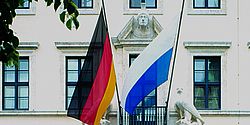
The striped flag consists of one white and one blue horizontal stripe which have the same width. The white stripe is on top, the blue on the bottom.
The rhombus flag
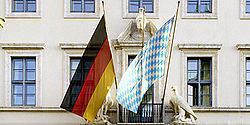
The rhombus flag consists of at least 21 rhombuses, which are white or blue. The truncated rhombuses are counted as well. In front view a truncated rhombus is always on the top left of the flag.
The Bavarian Anthem
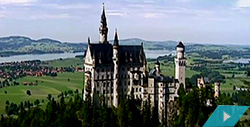
Since 1964 the song “Für Bayern” (“For Bavaria”) is played on official events in Bavaria and since 1966 it is officially called “Anthem”. It comes from about the year 1860. The melody was composed by Konrad Max Kunz who was professor at the Munich Conservatory and choir director at the Royal Opera House. The original text was written by the Munich teacher Michael Öchsner. The first performance was in the “Bürger-Sänger-Zunft” (“Citizens-Singers-Guild”) in Munich. Through the dissemination in associations it quickly became well known. In 1952 the Bavarian State Parliament decided unanimously that the song “Für Bayern” should be taught in schools.
